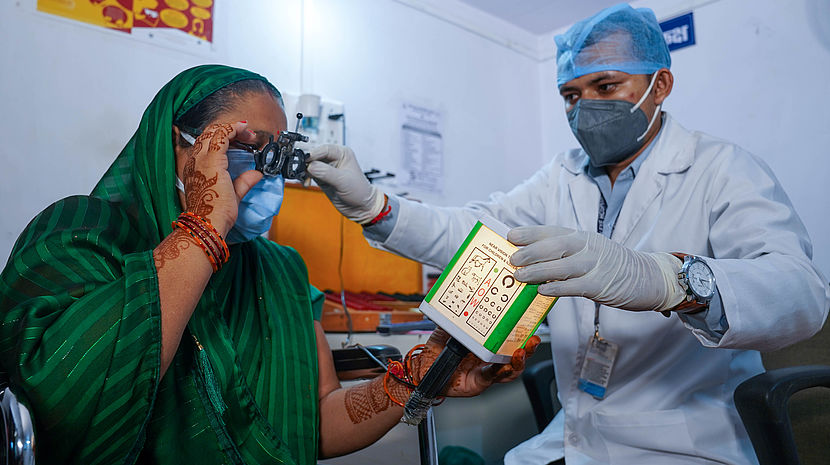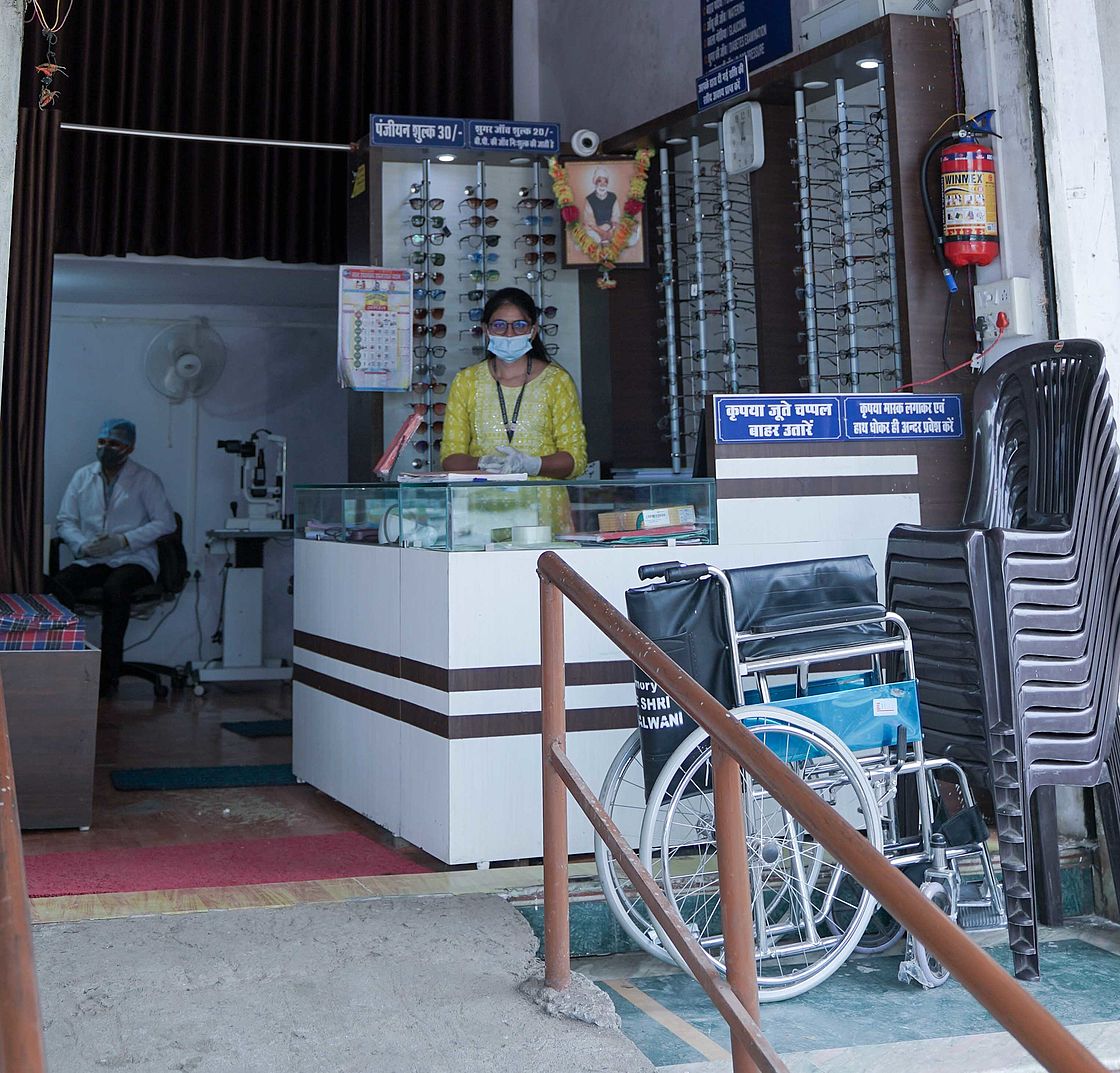Bringing Eye Care to Communities in India

Mrs Sukhmani having her eyes tested by Hari Prasad at the Sirali Vision Centre, Madhya Pradesh, India
CBM
Inclusive Vision Centres provide primary eye care to the surrounding communities. They are equipped with basic ophthalmic equipment and computers with internet connectivity that are linked to a secondary hospital for referrals and further treatment.
One of the ways of ensuring that people who need eye care get it is by making it easily available in local facilities.
In rural India, people with disabilities, elderly people, women, children and those on low incomes often find it difficult to travel to specialist eye centres. Many of these people struggle on without help, dealing with visual impairments that affect their ability to get an education or earn a livelihood.
In a bid to ensure that eye care is available to everyone who needs it, CBM India, in partnership with Standard Chartered Bank, has so far set up 50 disability inclusive Vision Centres (VCs) in three of the most populated states in India—Madhya Pradesh, Maharashtra, and Uttar Pradesh. These centres are implemented with the support of CBM’s hospital partners – Fatima Eye Hospital, HV Desai Eye Hospital, Catholic Health Association of India, Sewa Sadan Eye Hospital, and Sitapur Eye Hospital.
Inclusive Vision Centres are small, permanent facilities that provide primary eye care to the surrounding communities. They are equipped with basic ophthalmic equipment and computers with internet connectivity that are linked to a secondary hospital for referrals and further treatment. Some centres are also equipped for teleconsultations. The centres are barrier-free, with accessible infrastructure that improves access for people with disabilities and the elderly.

Sirali Vision Centre
CBM
The Vision Centre ophthalmologists, optometrists, and community mobilisers are trained in inclusive approaches, ensuring continuous referrals from the community. Twenty-eight of the centres are led by women, which also has the effect of improving access for all sections of the community.
The scheme has built in sustainability since at the end of the three-year project, secondary hospitals will take over the VCs. Revenue generated by income received from paid surgeries, the sale of spectacles, and other value-added diagnostic services will make VCs sustainable and enable CBM to phase out its mentorship. Technical support by CBM will continue.
By the end of 2023, the plan is to have 117 fully functional Vision Centres in eight states. More than 6 million people will get their vision checked. Over 72,279 will be referred to base hospitals for surgery, and 10,635 allied health workers will be trained in eye care and disability inclusion. In addition, approximately 6,000 people with disabilities will access the services. The project will bring in a 35% reduction in the prevalence of uncorrected refractive error in the programme geography and a 20% increase in people voluntarily accessing eye care services.
“I love making changes at the grassroots to make eye care accessible for all—especially for people who cannot afford it. We are committed to providing health screening and early intervention services to prevent permanent impairment. Before, people had to travel long distances even for primary eye services. Now with the Vision Centres, we can bring quality eye services close to their homes.”
Mr Manoj Dhavadiya, Programme Manager for Sirali Vision Centre, Madhya Pradesh, India implemented through Sewa Sadan Hospital.